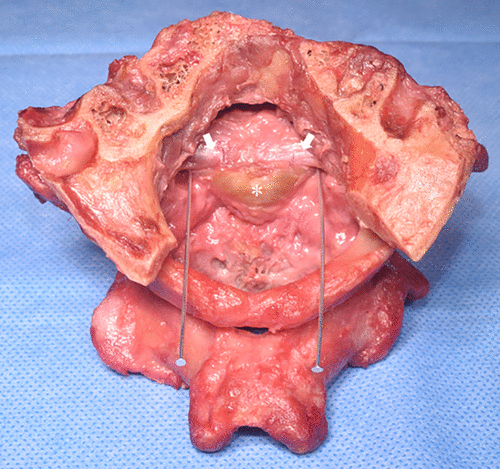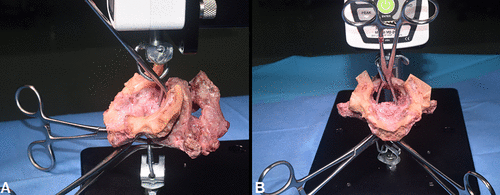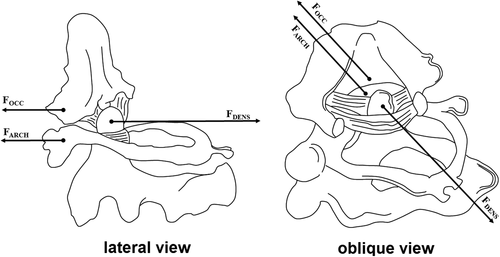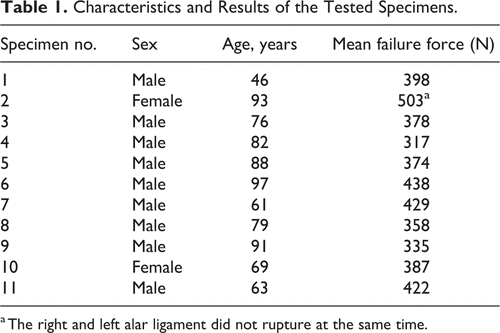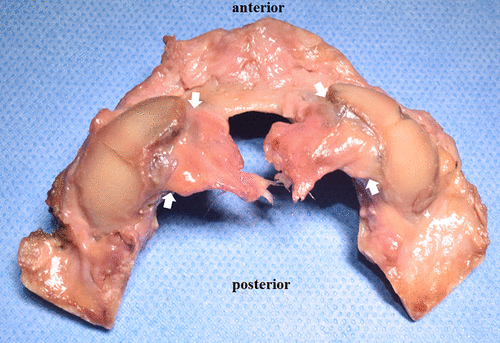Update on the Biomechanics of the Craniocervical Junction, Part II: Alar Ligament
Global Spine J . 2020 Jul 21;2192568220941452. doi: 10.1177/2192568220941452. Online ahead of print.
Basem Ishak, Alexander von Glinski, Graham Dupont , Stefan Lachkar, Emre Yilmaz, Joe Iwanaga, Andreas Unterberg, Rod Oskouian, R Shane Tubbs, Jens R Chapman
Abstract
Study design: In vitro biomechanical study.
Objective: The strength of the alar ligament has been described inconsistently, possibly because of the nonphysiological biomechanical testing models, and the inability to test the ligament with both attachments simultaneously. The purpose of this biomechanical model was to reevaluate the alar ligament's tensile strength with both bony attachments, while also keeping the transverse ligament intact, all in a more physiological biomechanical model that mimics the mechanism of traumatic injury closely.
Methods: Eleven fresh-frozen occipito-atlanto-axial (C0-C1-C2) specimens were harvested from individuals whose mean age at death was 77.4 years (range 46-97 years). Only the alar and transverse ligaments were preserved, and the bony C0-C1-C2 complex was left intact. Axial tension was exerted on the dens to displace it posteriorly, while the occipito-axial complex was fixed anteriorly. A device that applies controlled increasing force was used to test the tensile strength (M2-200, Mark-10 Corporation).
Results: The mean force required for the alar ligament to fail was 394 ± 52 N (range 317-503 N). However, both the right and left alar ligaments ruptured simultaneously in 10 specimens. The ligament failed most often at the dens (n = 10), followed by occipital condyle rupture (n = 1). The transverse ligament remained intact in all specimens.
Conclusions: When both the right and left alar ligament were included, the total alar ligament failure occurred at an average force of 394 N. The alar ligament failed before the transverse ligament.
Keywords: alar ligament; biomechanical study; cadaveric study; craniocervical junction; failure force.
